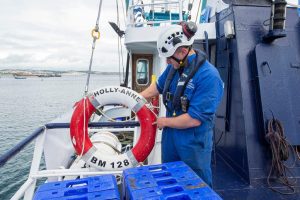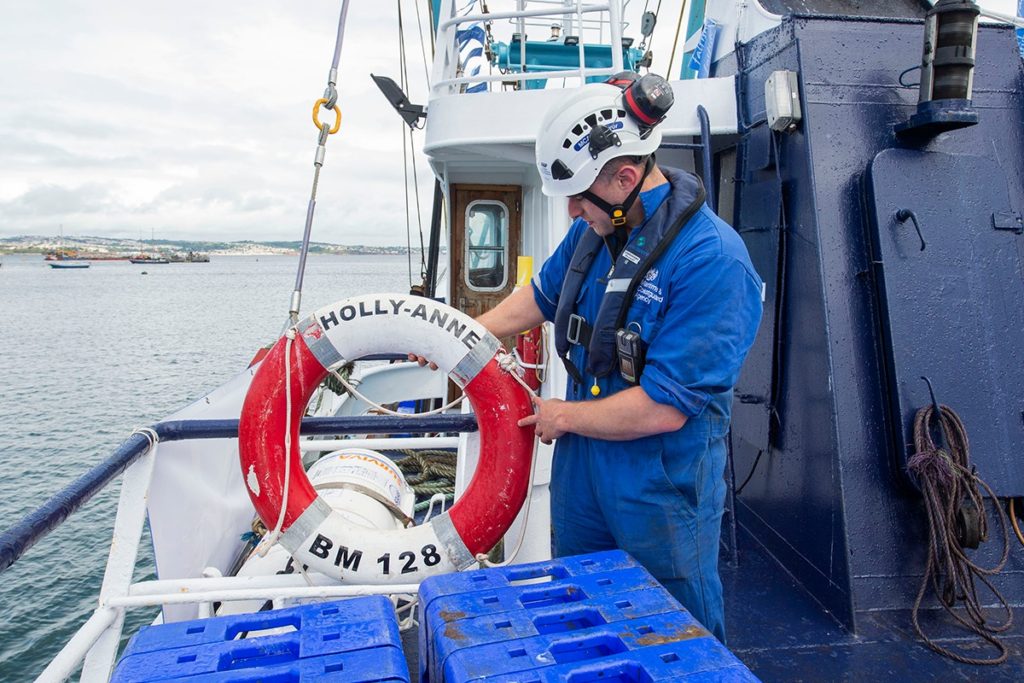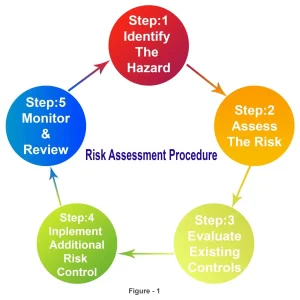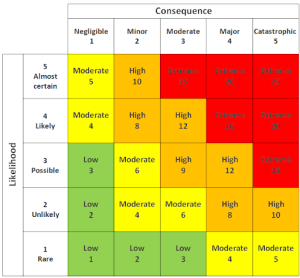Ensuring safety in maritime operations depends heavily on conducting comprehensive risk assessments onboard ships. With complex machinery, dynamic environments, and diverse tasks, seafarers face numerous hazards that require proactive identification and management. From cargo handling to engine maintenance, effective risk management ensures operational continuity, crew safety, and environmental protection. This article explores the methods of risk assessment, common maritime hazards, and strategies for minimizing accidents at sea.

The Risk Assessment Process
Risk assessment involves systematically evaluating potential hazards, determining the likelihood of occurrences, and implementing measures to control or mitigate risks. The process is integral to maritime safety management systems and aligns with international regulations, including the International Safety Management (ISM) Code and International Maritime Organization (IMO) standards.
Conducting a risk assessment onboard ships follows a structured process consisting of five key steps:
1. Identifying Hazards
Hazards can stem from various onboard operations, such as cargo handling, navigation, and machinery maintenance. Key sources of hazards include:
- Physical Hazards: Slippery decks, heavy machinery, and cargo shifts.
- Chemical Hazards: Exposure to fuels, cleaning agents, and toxic substances.
- Environmental Hazards: Severe weather conditions, rough seas, and restricted visibility.
- Human Factors: Fatigue, communication breakdowns, and lack of training.
2. Assessing Risks
Once hazards are identified, assess the severity and likelihood of each risk occurring. Use a risk matrix combining severity and probability to prioritize risks.
3. Determining Control Measures
Implement control measures based on the hierarchy of controls:
- Elimination: Remove the hazard if possible.
- Substitution: Replace dangerous processes or materials.
- Engineering Controls: Introduce safety barriers and automated systems.
- Administrative Controls: Establish procedures, training, and signage.
- Personal Protective Equipment (PPE): Use appropriate protective gear.
4. Implementing Controls
Put control measures into action by updating standard operating procedures (SOPs), training crew members, and conducting regular maintenance.
5. Monitoring and Reviewing
Continuously monitor the effectiveness of implemented measures through inspections, audits, and incident investigations. Update risk assessments regularly to reflect changing operational conditions.
Common Risks Faced Onboard Ships
Maritime operations involve various risk factors due to the ship’s complex working environment. Key risks include:
– Navigation and Collision Risks : Navigational errors, congested shipping lanes, and adverse weather conditions can cause ship collisions or groundings. Regular crew training, updated navigation systems, and adherence to COLREGs reduce these risks.
– Machinery and Engine Room Hazards : The engine room contains high-pressure systems, fuel lines, and rotating machinery that can cause burns, leaks, and mechanical failures. Regular equipment maintenance, engine monitoring, and personal protective gear reduce such hazards.
– Fire and Explosion Risks: Fuel spills, electrical faults, and flammable cargo pose significant fire and explosion risks. Fire suppression systems, proper storage, and crew fire-fighting drills mitigate these threats.
– Cargo Handling Risks: Cargo operations involve lifting heavy loads, operating cranes, and securing cargo. Improper cargo handling can lead to falls, crush injuries, and cargo loss. Adhering to cargo stowage plans, using certified lifting equipment, and following IMO’s Cargo Securing Manual minimize risks.
– Enclosed Space Hazards: Enclosed spaces, such as ballast tanks and cargo holds, present risks of oxygen deficiency and toxic gas accumulation. Gas detection devices, proper ventilation, and rescue drills are essential preventive measures.
– Man Overboard Incidents: Crew members can fall overboard during operations or emergencies. Wearing safety harnesses, ensuring deck safety measures, and conducting man-overboard drills enhance survival chances.
Risk Assessment Matrix
The Risk Assessment Matrix depicted in the image is a fundamental tool in risk management, designed to evaluate and prioritize risks by combining the probability of occurrence with the potential severity of their impact. This matrix serves as a visual representation, enabling a clear and systematic assessment of risks that might arise in any given project, process, or operational scenario.
On the vertical axis, the likelihood of a risk event occurring is plotted, ranging from “rare” at the lowest level, where the event is highly improbable, to “almost certain,” signifying events that are very likely to happen. Meanwhile, the horizontal axis represents the consequences or severity of the impact should the risk materialize. This scale moves from “negligible,” indicating minimal or no damage, to “catastrophic,” where the repercussions are severe and far-reaching.
Each intersection within the grid combines a likelihood and a consequence score to produce a risk level, which is further categorized and color-coded. For example, a green cell represents a low-level risk, requiring little to no immediate attention. Yellow cells indicate moderate risks that should be monitored, while orange highlights high risks that demand prompt action. The red cells represent extreme risks, signaling urgent and comprehensive intervention.
The scoring within the matrix is numerical, derived from multiplying the likelihood and consequence values. For instance, a moderately likely event (scored as 3) with a major consequence (scored as 4) results in a risk level of 12, categorized as “high risk.” This quantification helps organizations not only identify risks but also prioritize them based on their severity and probability.
In practical applications, this matrix serves as a decision-making framework. For instance, consider a construction project where the risk of machinery failure is identified. If the likelihood of failure is rated as “possible” and the consequences are deemed “major,” this risk would fall into the high-risk category. As a result, measures such as enhanced maintenance schedules or contingency planning would be prioritized.
Overall, the Risk Assessment Matrix is a powerful tool for fostering a proactive approach to risk management. By providing a structured way to evaluate and prioritize potential threats, it empowers teams to allocate resources effectively, mitigate significant risks, and ensure the smooth progression of projects and operations.
Strategies for Minimizing Maritime Risks
To enhance maritime safety, ship operators can implement the following best practices:
1. Comprehensive Safety Training
Training programs focusing on emergency response, fire-fighting, first aid, and navigation enhance crew preparedness and competence.
2. Effective Communication and Reporting
Maintaining open communication among crew members ensures prompt reporting of safety concerns and operational anomalies.
3. Regular Safety Drills and Simulations
Conducting drills simulating emergency scenarios ensures crew readiness and familiarizes them with evacuation routes and emergency protocols.
4. Equipment Maintenance and Inspections
Scheduled inspections, servicing, and certification of shipboard equipment reduce the likelihood of technical failures.
5. Adherence to Safety Management Systems (SMS)
Following an approved SMS ensures that safety procedures are aligned with international maritime regulations, enhancing operational compliance.
Case Studies: Lessons Learned from Maritime Incidents
Case Study 1: Engine Room Fire on a Bulk Carrier
An engine room fire occurred due to a fuel leak caused by improper maintenance. The incident highlighted the importance of regular inspections, timely repairs, and fire-fighting system readiness.
Case Study 2: Cargo Shift Incident on a Container Ship
Improper cargo securing led to a severe cargo shift, causing vessel instability. Following cargo securing protocols, using approved lashing equipment, and conducting stability calculations could have prevented the incident.
Regulatory Framework for Risk Management
The maritime industry operates under several international conventions and codes emphasizing risk management, including:
- ISM Code: Mandates the implementation of a Safety Management System (SMS) on ships.
- SOLAS (Safety of Life at Sea) Convention: Ensures ship safety through design, construction, and operational standards.
- MARPOL (Marine Pollution) Convention: Reduces pollution risks from ships through strict environmental standards.
- ILO’s Maritime Labour Convention (MLC): Ensures safe and fair working conditions for seafarers.
Risk assessment is integral to ensuring safe maritime operations, protecting lives, cargo, and the marine environment. By following structured assessment processes, adopting industry best practices, and fostering a safety-first culture, shipping companies can enhance onboard safety and operational efficiency. A commitment to continuous improvement and compliance with international maritime regulations remains the cornerstone of risk management at sea.




that`s great.
thank you.